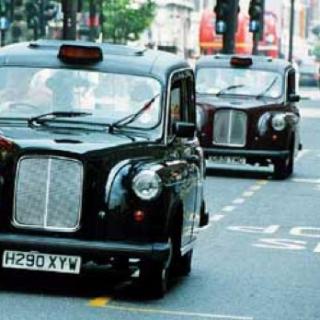
介绍:
Why Do the Brits Drive on the Left?
Hello everyone, welcome to the English show presented by Only For the Top One in Beijing New Oriental School. I’m Sam.
This time we are going to talk something about the British Culture on driving—Why do the brits drive on the left?
Let’s be honest, this question is only phrased this way to appease the two-thirds of the drivers of the world that now drive on the right-hand side of the road. The real question, the question that deserves to be asked, is this: why did everyone else stop driving on the left?
Taking the left hand side in traffic is a habit that goes back hundreds of years, possibly as far as the ancient Greeks, Egyptians and Romans, but certainly to an era when people habitually carried swords when traveling. As around 85-90% of humans are right-handed, passing on the right-hand side would leave carriage and cart drivers more open to attack from people coming the other way.
In 1773, the British Government introduced the General Highways Act, which encouraged horse riders, coachmen and people taking their vegetables to market to drive on the left, and that was that. The Highway Act of 1835 later reinforced this, making it the law of the land.
However, things were slightly different elsewhere. Russian authorities, for example, had already noticed that their people tended to favor the right, so their first edicts on the topic were that they continue to do so. The pre-revolutionary French were on the left, but having revolted, they moved over as part of a general reordering of all society, and when Napoleon took over the army and began invading nations, he ordered them to stay on the right hand side too. Popular myth suggests this was also because he was left-handed, but there were other advantages; it would prove unsettling for his enemies, it would show him to be a great military tactician, and it would irk the British. Perfect!
Everyone else kept left, but with increasing traffic on the roads in mainland Europe, this began to cause confusion, and slowly, over the course of the next hundred years or so, the European nations began to move over too.
Also, this divergent approach occurred at a time when the British and the French were very busy colonizing the world. Every country occupied by the Brits—like Australia, New Zealand, India and the West Indies—kept to the left, and the ones occupied by France moved over to the right. The Americas were split, with the new arrivals from Britain, Holland, Spain and Portugal keeping to the left, and the French colonies insisting on the right.
However, two vehicles were about to force this situation to change. In the late 1700s freight wagons became more and more popular, particularly in America. And where the wagons went, everyone else followed. So driving on the right became more common. And in those countries where car manufacturing became an essential industry for export, right-hand-drive vehicles with the steering column on the left quickly became a worldwide norm.
Although it’s interesting to note that this arrangement does favor the left-handed driver somewhat, as their dominant hand is the one that never leaves the steering wheel. A right-handed driver in a British car spends a good deal of their time steering with his or her right hand while fiddling with the gear stick with their left, which seems the safest way.
This may account for the relative popularity of stick-shift gearboxes in British cars to this day.
Oh and one last thing. In Japan, they historically drove on the left—partly by choice, partly because British engineers built their railway network to be left-hand drive—until 1945, when U.S. rule forced the Okinawa Prefecture to switch to the right. They returned to the left in 1978.
大家还在听

